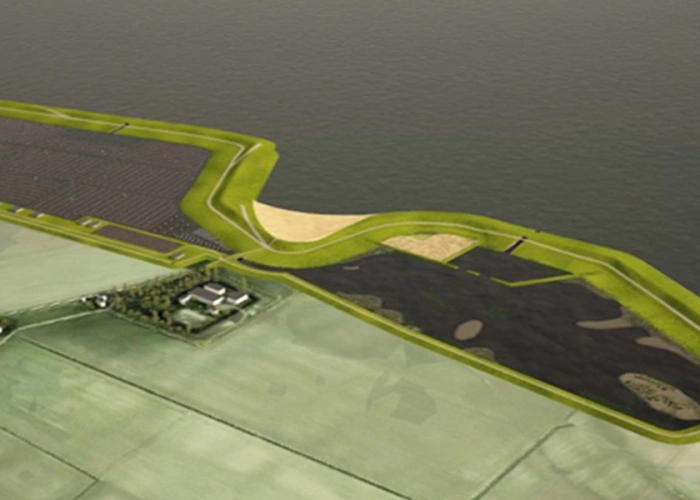Double Dyke Mariculture

Adapted from the project website
Concept
The concept of a Double Dyke was introduced by the Delta Program. This Dutch government program is in place to protect the Netherlands from flooding through improved flood control infrastructure and coastal zone planning.
In Groningen Province, where the sea dyke between Eemshaven and Delfzijl no longer meets the safety standards, a section of dyke is being reinforced by the construction of a second dyke further land inwards. The intermediate area within this 'double dyke' thus created, consists of 2 compartments which are fed by silty water from the Eems-Dollard. One of these compartments is designated for shellfish aquaculture and saline farming. The aim of the Double Dyke project is to improve and preserve the natural and economic value of this double dyke area. If successful, the concept could be scaled up and applied in other parts of the northern Dutch coastal zone (and beyond).
Components
The research work was carried out in four components;
A. Water quality monitoring (in the Eems, near the Double Dyke inlet point),
B. Effect of soil substrate on cockle growth (experiments at the NIOZ laboratory),
C. Growing conditions of seaweed (experiments at Waddenwier laboratory and in Polder Wassenaar), and
D. Scale experiment monitoring cockle growth under semi-natural conditions (experiments in experimental field Polder Wassenaar).
Duration
June 2016 - June 2018